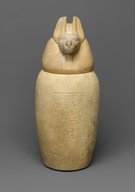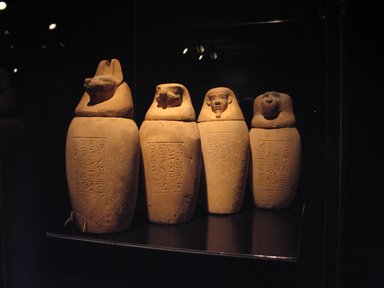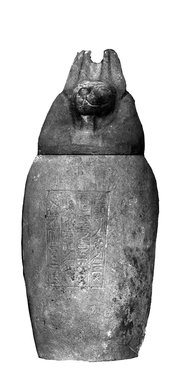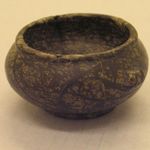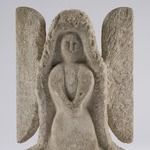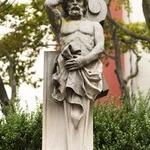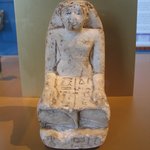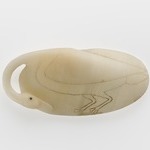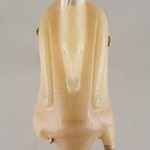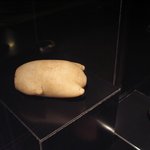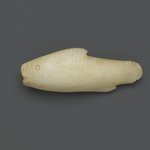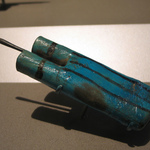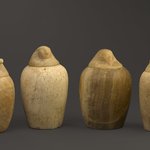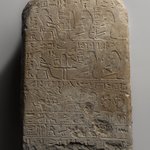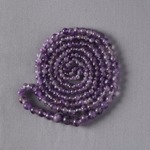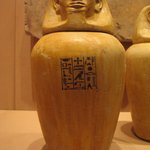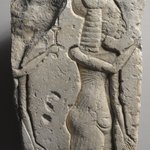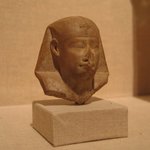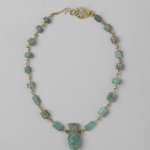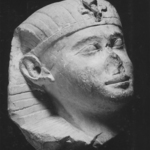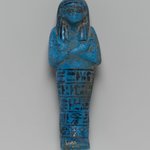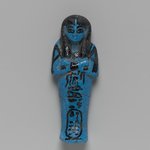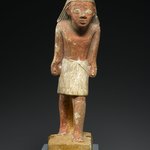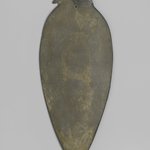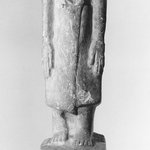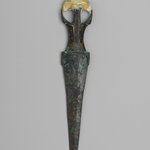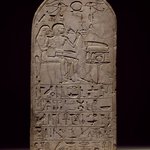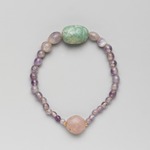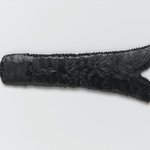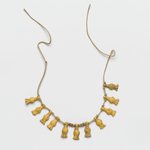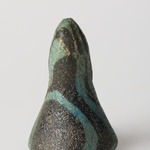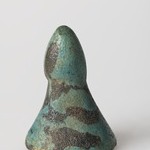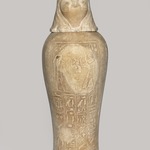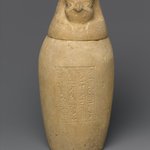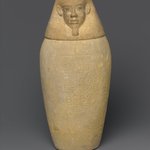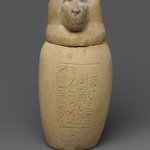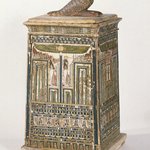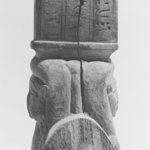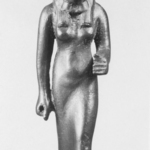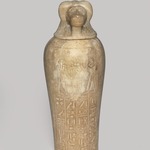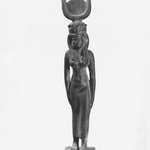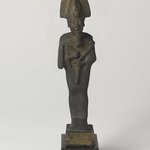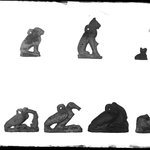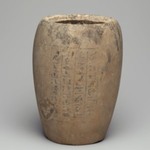Canopic Jar and Lid (Depicting a Jackal)
Egyptian, Classical, Ancient Near Eastern Art
Canopic jars first appeared in the tomb of Hetepheres, the mother of Khufu, builder of the Great Pyramid. They were intended to hold the separately mummified internal organs. The middle-class examples of canopic jars, which first appeared seven hundred years later, are often dummies like these, never hollowed out to hold the organs, but still included in the tomb. Canopic jars demonstrate the development of a custom at a royal cemetery that was then adopted in a cheaper form by the middle class.
MEDIUM
Limestone
DATES
664–525 B.C.E., or later
DYNASTY
Dynasty 26
PERIOD
Late Period
DIMENSIONS
12 × Diam. 4 3/4 in. (30.5 × 12.1 cm)
(show scale)
ACCESSION NUMBER
37.894Ea-b
CREDIT LINE
Charles Edwin Wilbour Fund
CATALOGUE DESCRIPTION
One limestone canopic jar (b) with stopper in the form of Duamutef, the jackal-headed god. The head is roughly modelled but in proportion to the jar. An inscription within a rectangular panel is incised upon front.
Condition: No trace of paint remains. Slight chipping here and there, but otherwise in excellent condition.
Found with 37.895E-.897E.
MUSEUM LOCATION
This item is not on view
CAPTION
Canopic Jar and Lid (Depicting a Jackal), 664–525 B.C.E., or later. Limestone, 12 × Diam. 4 3/4 in. (30.5 × 12.1 cm). Brooklyn Museum, Charles Edwin Wilbour Fund, 37.894Ea-b. Creative Commons-BY (Photo: Brooklyn Museum, 37.894Ea-b_front_PS1.jpg)
IMAGE
front, 37.894Ea-b_front_PS1.jpg. Brooklyn Museum photograph, 2007
"CUR" at the beginning of an image file name means that the image was created by a curatorial staff member. These study images may be digital point-and-shoot photographs, when we don\'t yet have high-quality studio photography, or they may be scans of older negatives, slides, or photographic prints, providing historical documentation of the object.
RIGHTS STATEMENT
Creative Commons-BY
You may download and use Brooklyn Museum images of this three-dimensional work in accordance with a
Creative Commons license. Fair use, as understood under the United States Copyright Act, may also apply.
Please include caption information from this page and credit the Brooklyn Museum. If you need a high resolution file, please fill out our online
application form (charges apply).
For further information about copyright, we recommend resources at the
United States Library of Congress,
Cornell University,
Copyright and Cultural Institutions: Guidelines for U.S. Libraries, Archives, and Museums, and
Copyright Watch.
For more information about the Museum's rights project, including how rights types are assigned, please see our
blog posts on copyright.
If you have any information regarding this work and rights to it, please contact
copyright@brooklynmuseum.org.
RECORD COMPLETENESS
Not every record you will find here is complete. More information is available for some works than for others, and some entries have been updated more recently. Records are frequently reviewed and revised, and
we welcome any additional information you might have.




